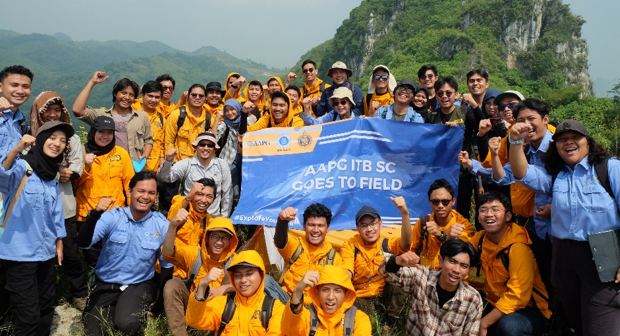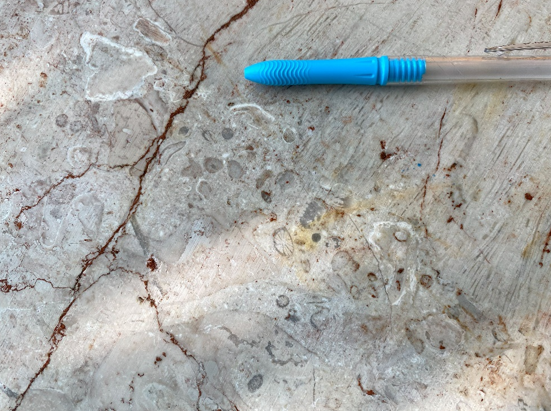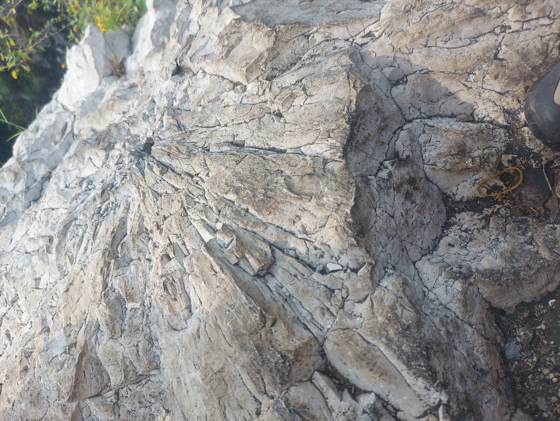Bandung – On April 30, 2023, one of our programs was carried out, namely AAPG ITB Goes To Field: Rajamandala Edition. This program is the first AAPG ITB Goes to Field program that we have implemented this year. Normally, activities like this take place three times in one year schedule of AAPG ITB SC.
Rajamandala, which is famous for its carbonate platform, is indeed one of the places for the field program that we hope to carry out after the pandemic is over. There are three places we visited (Mount Hawu, Stone Garden, and Citatah) accompanied by two sedimentology and stratigraphy lecturers, Dr. Dwiharso Nugroho, S.T., M.T., and Wahyu Probo Ananto, S.T., M.T. which also explains the carbonate facies and the distribution of the Rajamandala Formation. The Rajamandala Formation is composed of 13 different facies, which include deep sea (platy coral) and shallow sea (braching coral) facies.
On our first visit, Mount Hawu, we found a biogenic limestone outcrop which we measured to be approx 4 x 3 x 3 m. This biogenic limestone indicates that Rajamandala was once an isolated carbonate platform. Then in the stone garden, you can see clastic limestone outcrops resulting from deposition mechanism of bottom traction and gravity mass flow. This outcrop has the characteristics of repeating thin and thick layers which indicate the deposition of turbidite and debrite mechanisms.
The Rajamandala activity that we carried out for one full day, we really hope that in the future our field program can be even better and broaden our horizons as young geologists who are interested in the oil and gas sector. Thank you to all who have participated in this Rajamandala field program. Then we also thank the lecturers, Mr. Nuki and Mr. Probo who have guided us in this field program. See you guys in the next event!



Nice Article! Keep going AAPG ITB SC!!